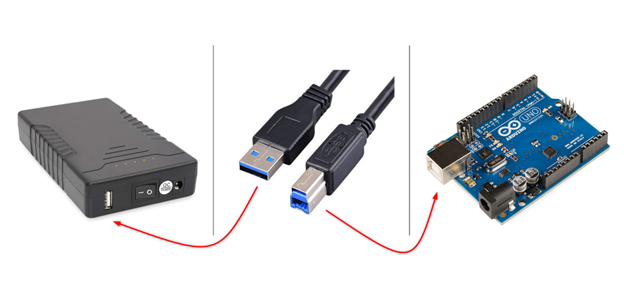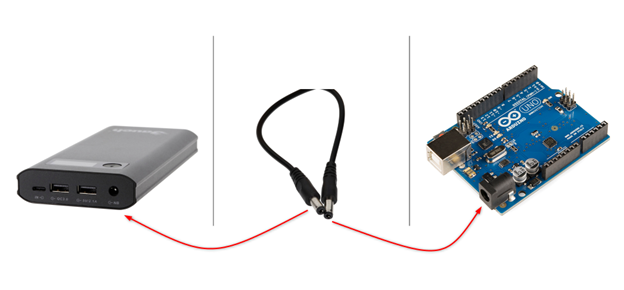Arduino is a very versatile electronic microcontroller board. Arduino is widely used as a microcontroller board for multiple DIY projects. Arduino is popular because of its portability and multiple features that helps it to fit everywhere. Similarly, the Arduino board has multiple ways of powering it which increases its productivity by a great number.
For remote and wireless based projects power is the main issue so here we will discuss is it possible to power Arduino with portable rechargeable power bank and if yes then how many ways.
Powering Arduino Using Power Bank
Arduino boards can be powered up mainly using three different ways. These include a USB port, DC barrel jack and the power pins (Vin). Powering Arduino using USB port is the safest and reliable source to run Arduino as power input to USB B port mainly coming from USB ports of PCs, mobile charger, or power banks.
Seeing all the power requirements we can say that yes! It’s possible to power Arduino using the power bank. As most of the power banks come with a USB port that outputs 5V which is well regulated and according to the Arduino working voltage.
Let’s see how many ways we can power Arduino using the power bank.
Ways To Power Arduino Using Power Bank
As multiple types of power banks are available with different ports and voltage output. So, it’s better to understand how we can use a power bank with an Arduino without damaging it.
Here are the two commonly used way of powering Arduino with power bank:
Using the USB Port
All the portable power banks include the output USB port that helps to charge devices over 5V. So, by connecting the one end of the USB B cable to the Arduino port and the other end to the power bank we can easily give power to Arduino.
Note: Before powering Arduino with power bank make sure to upload the code to Arduino board first by connecting it with PC. Once the power bank is connected at the USB B port of the Arduino it cannot upload sketches anymore. For that you have to remove the power bank to free the USB port.
Using the DC Barrel Jack
Another way of powering an Arduino with a power bank is using the DC barrel jack. Normally DC barrel jack is not included in most of the power banks however with some research we can easily find them online over any store. Power banks like these output 5V to 9V. So, using the DC barrel jack we can turn on Arduino.
Note: As Arduino DC barrel jack is connected to onboard voltage regulator so it’s recommended to use voltage greater than 5V something like 9V as once the voltage passes through ion board regulator some of the power will lose.
Can I Use 5V 2.1 Amps Power Bank
Yes, it’s safe to use a power bank with 2.1A if the voltage is constant. In each circuit the current drawn is directly proportional to its effective resistance. Arduino only uses the required current at 5V. The 2.1Amps is the maximum rating of the power bank that it can deliver if it loads demand.
So don’t connect heavy loads such as motors across Arduino as they draw more current greater than Arduino maximum current output (600mA) at 5V output pin.
Important Note
One of the issues which most people face while powering an Arduino with a power bank is the auto shutoff power bank. Most power banks are smart enough that if no load is connected, they automatically turn it on. This happens because the Arduino draws so less current, normally less than 50mA that the power bank senses no device is connected so it automatically shuts down. Make sure to keep this in mind while powering the Arduino with a power bank.
Conclusion
Arduino can be powered up using a portable power bank. Using the external rechargeable power bank, we can increase Arduino productivity. Power bank can be connected either using the 5V USB port or by connecting the DC barrel jack across Arduino.


